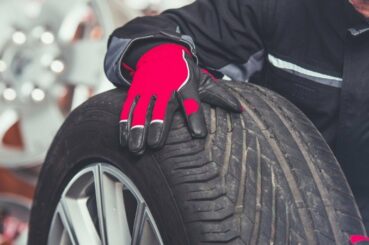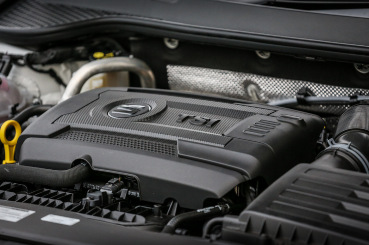Tyres are one of the most important parts of a car as they are the cars only point of contact with the road. However, as motorists, we often overlook the condition of tyres until it’s time for regular maintenance like an MOT.
If your tyres are not in good condition, it can not only increase the risk of you having a road accident but can also affect performance, handling and fuel economy. So it is crucial you keep your tyres in tip-top condition.
1. Regularly check tyre pressures
Under or overinflated tyres can affect the way your car steers, handles and brakes, as well as increasing wear and the chances of you having a blowout. Incorrectly inflated tyres can also impact fuel consumption figures, meaning you need to make more stops at the fuel station.
You should check the pressure of all of your tyres, including your spare if you have one, at least once every month. It is also wise to check tyre pressures before making a long journey or if you plan to carry a heavier load or tow.
Your car manual will indicate the recommended tyre pressure. Be aware, some manufacturers offer several figures depending on use, for example, when towing the manufacturer may recommend different tyre pressures.
Tyres are also often marked with a tyre pressure figure. However, this is a maximum limit so should not be relied upon as an accurate measure of tyre pressure for daily driving.

2. Check the condition of your tyres
It is also important to check the actual condition of the tyres, whenever you check your tyre pressures.
You should check the tyres for signs of unusual wear or damage. Look for bulges, cuts or objects embedded in the tyres as these may need to be investigated more thoroughly by a mechanic to make sure your tyres are still safe. The mechanic may be able to repair the tyres, or the tyres may need replacing.
If you ever notice a puncture when driving, you should pull over and swap to your spare wheel, as soon as safe to do so. You should then head straight to a garage to get your tyre looked at and you should avoid making unnecessary journeys on your spare tyre.
If you don’t have a spare tyre, you should slowly make your way to a garage to get your tyre checked and replaced if needed.
3. Check the condition of your tyre tread
When checking the condition of your tyre, make sure you check your tread depth too. The tyre tread depth can have a direct impact on the performance of your car as well as its overall safety. In poor weather conditions, having limited tread depth can have a huge impact on the handling, and therefore safety of your vehicle.
The legal minimum tread depth is 1.6mm; if your tyre tread falls below this you can face a hefty fine of up to £2,500 and up to three points on your licence per tyre.
You should always make sure you replace any tyre at or below this 1.6mm legal limit and bear in mind that your car will fail its MOT if the tyres fall below this limit.
20p Test
There is an easy way to check your tyres comply with the legal tread tyre depth limit. Place a 20p into the main tread grooves of your tyre. If the outer band of the 20p coin is obscured when inserted, then your tyre has a tread depth above the legal limit. If the outer band is still visible, then the tread depth may be illegal and should be checked. You should test at least three different locations on each tyre.
4. Use the right tyres
One of the easiest ways to keep your tyres in good condition is to use the right tyres for the conditions. In the UK, the majority of people now use all-weather tyres as they offer good performance all year round.
However, some European countries which get more extreme weather conditions still require motorists to switch between summer and winter tyres. Summer tyres are specifically designed to offer optimum performance above 7°C, whereas winter tyres work better under 7°C.
5. Ensure wheels are aligned
Wheel alignment is important as wheels which are not aligned can cause uneven tyre wear. Uneven tyre wear can increase the likelihood of tyre damage, increase fuel consumption and affect your control of the car.
Wheel alignment is not something you can check yourself, so it is important to get a mechanic to check your wheel alignment whenever you get your tyres fitted.

6. Keep an eye on the maximum load
Overloading your car can put extra weight on your tyres compromising the handling of the vehicle and potentially causing excessive tyre wear. What’s more, when overloaded, tyres are more at risk of a blowout, which increases the risk of having an accident.
Most tyres are now marked with a tyre load index, and it is important to make sure you don’t exceed this maximum load limit.
7. Rotate your tyres
To help make your tyres last longer, it can be a good idea to rotate them regularly to make sure that wear is even. Usually, front tyres wear faster than rear tyres so rotating them can be a way to help increase their lifespan. Some manufacturers will indicate their recommended rotation schedule within the handbook but usually, it is around 5,000 miles.
Directional tyres can simply be switched front to back, so the left front moves to left back and left back to left back and vice versa on the right. Whereas non-directional tyres can be moved more freely as swapping left front to right back and vice versa, will have no negative impact on the handling of the vehicle.
8. Take care with kerbs
One of the biggest causes of damage to tyres comes from kerbs, from either bumping into them or mounting them without due care. When parking up at the side of the road, you should take care not to knock the kerb with your tyres, so you should always slow down and manoeuvre with care.
While it is best to avoid mounting a kerb, sometimes it is unavoidable. Mounting the kerb can be dangerous as it can cause the sidewall to be pinched between the kerb and the wheel. In this situation, it is important to take extra care approaching slowly and mounting the kerb at an acute angle to avoid scraping the side of the pavement.

9. Practice good driving habits
There are a few things you can make sure you are doing to increase the lifespan of your tyres:
– Avoid heavy braking
– Accelerate progressively
– Make transitions smoother
– Avoid bumps, potholes and road undulations where possible
– Slow down for speed bumps
Stoneacre Tyre Maintenance
So there you have it, nine simple but effective tips to help make your tyres last longer.
Remember if you don’t feel confident checking your tyres, you can bring your car into your local Stoneacre dealership to get them checked completely free of charge – click the link below to find out more.




